peer-to-peer model
description: type of decentralized and distributed network architecture
17 results
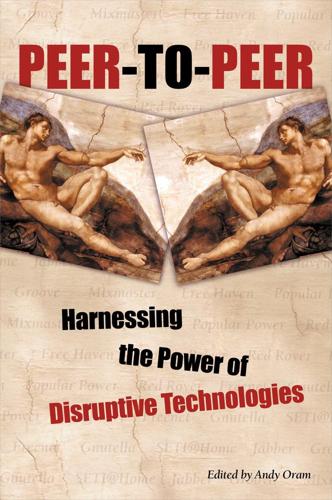
Peer-to-Peer
by
Andy Oram
Published 26 Feb 2001
–Social solutions: Engineer polite behavior, Strategic positioning and core competencies–Strategic positioning and core competencies, Gnutella’s effects governmental threats to privacy, Red Rover–Red Rover instant messaging and, Immediate information sharing: The new instant messaging services managing congestion to prevent bandwidth attacks, Moderating security levels: An accountability slider managing metadata and, Strategic positioning and core competencies meme map current, The current peer-to-peer meme map–The current peer-to-peer meme map new, The new peer-to-peer meme map–Peer-to-peer and devices micropayments economic impact of, General considerations in an economic analysis of micropayment design–General considerations in an economic analysis of micropayment design exchanging, The difficulty of distributed systems: How to exchange micropayments among peers–The difficulty of distributed systems: How to exchange micropayments among peers identity-based, Identity-based payment policies risks involved, Moderating security levels: An accountability slider usefulness of, The use and effectiveness of micropayments in peer-to-peer systems–Moderating security levels: An accountability slider models, A Network of Peers: Peer-to-Peer Models Through the History of the Internet–Conclusions, Peer-to-peer models and their impacts on accountability next-generation file sharing technologies, Next-generation peer-to-peer file-sharing technologies open source and, File sharing: Napster and successors problems with, A Network of Peers: Peer-to-Peer Models Through the History of the Internet, Decentralization is a tool, not a goal, Special problems posed by peer-to-peer systems protocol-centric addressing, Nothing succeeds like address, or, DNS isn’t the only game in town–An explosion of protocols remailer difficulties, General discussion reputation system, Central Reputation Server versus distributed Reputation Servers revisionist history of, A revisionist history of peer-to-peer (1969-1995)–DNS scalability and, Performance security provided by Groove, Security–Taxonomy of Groove keys SETI@home and, The peer-to-peer paradigm social and technical solutions to problems, Technical solutions: Return to the old Internet social impact of, Some context and a definition summit, Remaking the Peer-to-Peer Meme–A success story: From free software to open source meme map developed at, Remaking the Peer-to-Peer Meme, The new peer-to-peer meme map–Peer-to-peer and devices trust issues, Trust–Conclusions users donating resources, Freeloading using accountability to expand, Accountability using port 80, Abusing port 80 using RDF for applications, Foundations of resource description: Unique identifiers vs. client/server model, A Network of Peers: Peer-to-Peer Models Through the History of the Internet, Peer-to-peer is a horseless carriage, Peer-to-peer architecture and second-class status, The peer-to-peer paradigm, A clean sweep?
…
Last but not least, scalability is a crucial concern for systems that hope to make the leap from conceptual demonstration to world-wide usage. For systems that do not inherently scale well, a further set of trade-offs can allow better scalability through a move toward a hierarchical peer-to-peer model, though at the expense of local autonomy. The peer-to-peer model encompasses a diverse set of approaches. By recognizing the wide range of possibilities available, inventing new ideas and new combinations, and using analytical methods to evaluate their behaviors, system designers will be well-equipped to exploit the power of peer-to-peer.
…
You can access this page at: http://www.oreilly.com/catalog/peertopeer To comment or ask technical questions about this book, send email to: bookquestions@oreilly.com For more information about our books, conferences, software, Resource Centers, and the O’Reilly Network, see our web site at: http://www.oreilly.com Part I. Context and Overview This part of the book offers some high-level views, defining the term “peer-to-peer” and placing current projects in a social and technological context. Chapter 1. A Network of Peers: Peer-to-Peer Models Through the History of the Internet Nelson Minar and Marc Hedlund, Popular Power The Internet is a shared resource, a cooperative network built out of millions of hosts all over the world. Today there are more applications than ever that want to use the network, consume bandwidth, and send packets far and wide.
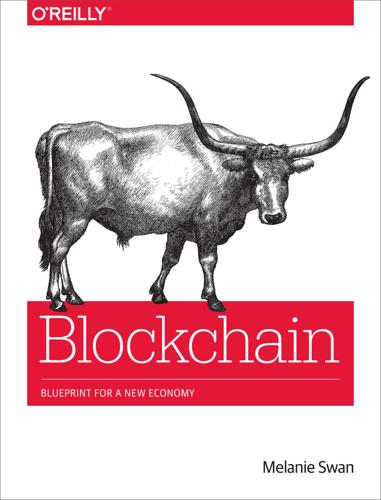
Blockchain: Blueprint for a New Economy
by
Melanie Swan
Published 22 Jan 2014
An interesting challenge for academic publishing on the blockchain is not just having an open-access, collaboratively edited, ongoing-discussion-forum journal per existing examples, or open-access, self-published blockchain white papers on GitHub, but to more fundamentally implement the blockchain concepts in blockchain journals. The consideration of what a decentralized direct peer-to-peer model for academic publishing could look like prompts the articulation of the functions that academic publishing provides and how, if these are still required, they might be provided in decentralized models. In terms of “publishing,” any manner of making content publicly available on the Web is publishing; one can easily self-publish on blogs, wikis, Twitter, Amazon, and the like.
…
In terms of “publishing,” any manner of making content publicly available on the Web is publishing; one can easily self-publish on blogs, wikis, Twitter, Amazon, and the like. A blockchain model in terms of decentralized peer-to-peer content would be nothing more than a search engine linking one individual’s interests with another’s published material. This is a decentralized peer-to-peer model in the blockchain sense. So, academic (and other publishers) might be providing some other value functions, namely vouching for content quality. Publishers provide content curation, discovery, “findability,” relevancy, advocacy, validation, and status ascribing, all of which might be useful attributes for content consumers.
…
Many blockchain companies provide alternative wallet interfaces that have this kind of functionality, such as Blockchain.info’s numerous wallet APIs. Business Model Challenges Another noted challenge, both functional and technical, is related to business models. At first traditional business models might not seem applicable to Bitcoin since the whole point of decentralized peer-to-peer models is that there are no facilitating intermediaries to take a cut/transaction fee (as in one classical business model). However, there are still many worthwhile revenue-generating products and services to provide in the new blockchain economy. Education and mainstream user-friendly tools are obvious low-hanging fruit (for example, being targeted by Coinbase, Circle Internet Financial, and Xapo), as is improving the efficiency of the entire worldwide existing banking and finance infrastructure like Ripple—another almost “no brainer” project, when blockchain principles are understood.

WTF?: What's the Future and Why It's Up to Us
by
Tim O'Reilly
Published 9 Oct 2017
Yet over the next few years, Uber developed into a force that transformed the market for on-demand transportation, and today it has more drivers providing services than the entire previous taxi and limousine industry. How did this happen? The game changer came early in 2012 when two companies, Sidecar and Lyft, introduced a peer-to-peer model in which ordinary people, not just licensed limousine drivers, provided the service using their personal cars. It was this further innovation that reshaped the way we think about employment, with drivers who not only have no guaranteed work from the company, but also make no guarantees to the company about whether they will work when they are needed.
…
There are many historical examples of peer-to-peer public transportation. Zimride, Logan Green and John Zimmer’s predecessor to Lyft, was inspired by the informal jitney systems they observed in Zimbabwe. But using the smartphone to create a two-sided, real-time market in physical space was something profoundly new. After initial skepticism, Uber copied the peer-to-peer model a year later. Driven by an aggressive CEO, a stronger technical focus on logistics and marketplace incentives, a take-no-prisoners corporate culture, and huge amounts of capital, it has spent billions to outpace its rivals. Lyft is still a strong contender in the United States, gaining, but in distant second place.
…
Drivers Who Show Up When You Need Them. Transportation on demand for passengers requires a critical mass of drivers. Uber’s original vision of black car drivers on demand served only a narrow slice of the potential market. As their ambitions grew, they needed a much larger supply of drivers, which the peer-to-peer model supplied. Augmented Workers. GPS and automated dispatch technology inherently increase the supply of drivers because they make it possible for even part-time drivers to be successful at finding passengers and navigating to out-of-the-way locations. There was formerly an experience premium, whereby experienced taxi and limousine drivers knew the best way to reach a given destination or to avoid traffic.

The Sharing Economy: The End of Employment and the Rise of Crowd-Based Capitalism
by
Arun Sundararajan
Published 12 May 2016
Will they induce growth because there’s a lot more exchange going on? Will Duncan’s vision of “impulse buying, then renting out” materialize? Or will the economy slow because people stop buying things? La Ruche Qui Dit Oui—Redefining Perfection Back in Paris, there’s another face-to-face, peer-to-peer model that’s been gaining popularity in a different vertical—grocery shopping. In spring 2014, accompanied by a wonderful NYU Stern MBA student team (Humaira Faiz, Sydnee Grushack, Andrew Ng, and Jara Small), I met Marc-David Choukrun, the co-founder and CEO of La Ruche Qui Dit Oui, which translates roughly to “the beehive that says yes,” and is also known in English-language countries by the easier-to-remember name The Food Assembly.
…
The third category involves collaborative forms of finance, such as Funding Circle and Kiva, or Bitcoin (which enables people to carry out transactions without a traditional third-party intermediary). Finally, the fourth category consists of collaborative forms of education, such as Coursera and edX, which enable people around the world to take courses at top-ranked universities whether or not they are enrolled as students, or Skillshare and Trade School, which offer alternative peer-to-peer models for gaining knowledge. Owyang’s Honeycomb As crowd-based capitalism evolved in 2012 and 2013, Jeremiah Owyang developed an industry-sector-based classification of the different kinds of economic activity that he viewed as “collaborative.” His Collaborative Economy Honeycomb provides a nuanced categorization of the sharing economy in 2015 and is a useful way of keeping track of the scope and impact of this new form of organizing economic activity across different industry verticals.19 As I write this book, Owyang’s broad categories include learning, municipal, money, goods, health and wellness, space, food, utilities, transportation, services, logistics, and corporate.
…
And Californians actually use their cars more intensively than the average US resident does. Figure 5.1 Vehicle usage in the United States (compiled from NHTS data as of 2009). We may not need to wait for self-driving cars to see a digitally induced economic revolution in the auto and transportation sector. The range of new peer-to-peer models—Uber to get a driven car on-demand, Lyft to see who else is driving your route, Getaround to see whose car in your neighborhood might be available for you to drive by yourself, BlaBlaCar to get a ride to another city—have already started to increase the impact of the global automobile stock.

Extreme Teams: Why Pixar, Netflix, AirBnB, and Other Cutting-Edge Companies Succeed Where Most Fail
by
Robert Bruce Shaw
,
James Foster
and
Brilliance Audio
Published 14 Oct 2017
The CEO of Airbnb, for example, wants people to consider what a competitor might do to undermine or even kill his firm’s business model.29 That is, he wants his people to actively envision products or services that would render Airbnb’s business model obsolete. The goal is to ensure that Airbnb innovates faster than the competition and, in so doing, prevents others from doing what Airbnb is now doing to traditional hotels with its peer-to-peer model. Airbnb is constantly testing new ideas within its current model, such as hosts picking up their guests at the airport or providing them with walking tours and other experiences (for example, dinners or cultural events). It has also considered other areas in the “sharing economy” outside of its current business.
…
CHAPTER 7 TEAMS AT THE EXTREMES Without Adventure, Teams Slowly Decay1 It’s no accident that the companies profiled in this book were all founded by extraordinary entrepreneurs.2 Their businesses were built on innovative ideas that overturned the existing order of things within their industries. Netflix is disrupting the media industry through its streaming service. Airbnb is disrupting the hospitality industry through its peer-to-peer model. Alibaba is disrupting the way business is done in China through its e-commerce sites. The leaders of these firms, however, realize that their long-term success requires more than groundbreaking products and services. They need their companies, as companies, to be equally innovative—workplaces that are challenging commonly accepted ways of operating.

Surviving AI: The Promise and Peril of Artificial Intelligence
by
Calum Chace
Published 28 Jul 2015
Peer-to-peer A new business model which is generating a lot of column inches for the idea of digital disruption is peer-to-peer commerce, the leading practitioners of which are AirBnB and Uber. Both were founded in San Francisco, of course – in 2008 and 2009 respectively. The level of investor enthusiasm for the peer-to-peer model is demonstrated by comparing AirBnB’s market cap of $20bn in March 2015 with Hyatt’s market cap of $8.4bn. Hyatt has over 500 hotels around the world and revenues of $4bn. AirBnB, with 13 members of staff, owns no hotels and its revenues in March 2015 were around $250m. Uber’s rise has been even more dramatic: its market cap reached $50bn in May 2015.

Talk Is Cheap: Switching to Internet Telephones
by
James E. Gaskin
Published 15 Mar 2005
Business Details They Don't Mention The following list describes the business elements Skype doesn't specify: Money, and the need for money to support Skype, will become critical over 2005. They have millions of venture capital investments, including $19 million in March 2004 as a second round. Executives refused to say how much their initial funding was, but said it was "less than $10 million" (Zennstrom interview with CNET 12/2/2003). Admittedly, the peer-to-peer model reduces costs, and the viral marketing scheme worked so well I don't think they've spent any significant advertising dollars. But the services they must provide to keep growing, such as SkypeOut improvements, SkypeIn, voicemail, and their hinted Skype for Business, will require investment. Right now, the number of Skype registered users paying for SkypeOut hovers around three percent.
…
Business Details They Don't Mention The following list describes the business elements Skype doesn't specify: Money, and the need for money to support Skype, will become critical over 2005. They have millions of venture capital investments, including $19 million in March 2004 as a second round. Executives refused to say how much their initial funding was, but said it was "less than $10 million" (Zennstrom interview with CNET 12/2/2003). Admittedly, the peer-to-peer model reduces costs, and the viral marketing scheme worked so well I don't think they've spent any significant advertising dollars. But the services they must provide to keep growing, such as SkypeOut improvements, SkypeIn, voicemail, and their hinted Skype for Business, will require investment. Right now, the number of Skype registered users paying for SkypeOut hovers around three percent.

Exponential Organizations: Why New Organizations Are Ten Times Better, Faster, and Cheaper Than Yours (And What to Do About It)
by
Salim Ismail
and
Yuri van Geest
Published 17 Oct 2014
., higher than zero) is considered good, and an NPS of +50 is excellent. The NPS is largely based on a single, direct question: How likely is it that you would recommend our company/product/service to a friend or colleague? If you have a high NPS, then your sales function is free. If you are using peer-to-peer models, your service costs can also essentially be free. Using crowdsourcing and community ideation (such as Quirky or Gustin), your R&D and product development costs can also approach zero. And it doesn’t stop there. What we’re now seeing with ExOs—and this is tremendously important—is that the marginal cost of supply goes to zero.

Peers Inc: How People and Platforms Are Inventing the Collaborative Economy and Reinventing Capitalism
by
Robin Chase
Published 14 May 2015
Spotify and Pandora, however, advanced the business model yet again. Not only do I not need to buy a whole album when I only want one song, but since I can listen to any song I want at any time through a subscription service, I don’t feel the need to own music at all. Jeremiah Owyang, formerly an analyst at Forrester Research covering peer-to-peer models and how companies respond, is now founder of Crowd Companies, a brand council that offers research and strategic advice to companies seeking to become part of the collaborative economy. He has a simple four-phase circular path that explains the transition from the old industrial approach to the new one: Product → Service → Marketplace → Platform.
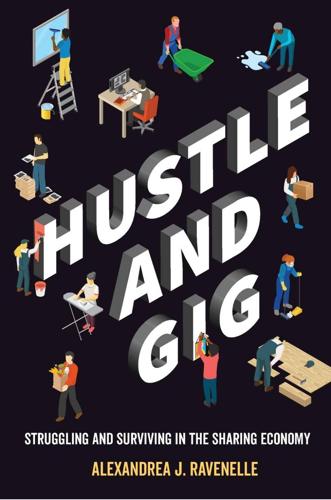
Hustle and Gig: Struggling and Surviving in the Sharing Economy
by
Alexandrea J. Ravenelle
Published 12 Mar 2019
That type of advance planning is challenging enough for people with steady white-collar employment. But for workers who find themselves in a variety of workplaces and dealing with different “bosses” daily, such planning is nearly impossible. For TaskRabbit workers, especially, this can be a problem. Under the peer-to-peer model, workers are often hired by individuals who may not fully understand what they’re asking them to do, or who may downplay the description to avoid scaring off a potential worker. Natasha, twenty-eight, tries to weed out work that she’s uncomfortable with, but sometimes clients aren’t forthcoming with details.

Smart Mobs: The Next Social Revolution
by
Howard Rheingold
Published 24 Dec 2011
Internet users were not passive consumers but the “prosumers” the Tofflers had predicted in the 1980s.54 Just because the new medium has come from an innovation-rich and universally accessible commons doesn’t guarantee that it will remain that way; radio and television were tamed in their day. The U.S. Congress’s and FCC’s laws and rulings over the next few years will make the difference between a traditional broadcast model and a peer-to-peer model for wireless Internet. In the future, U.S. policies favoring multinational corporations probably will be incorporated in the international intellectual property treaty frameworks that are being put into place around the world. So far, decisions have favored large intellectual property owners, removed common carriage and public access responsibilities from cable and telephone companies, and confined new wireless technologies to tiny sectors of spectrum, reserving the rest for the exclusive use of license-holders invested in established technologies.55 Indeed, the most realistic prediction is that unless some new pressures are brought to bear and the U.S. and global regulatory process changes its present course, mobile and pervasive technologies won’t be used by smart mobs at all but will be more aptly described by the science fiction story The Marching Morons.56 The telecommunications industry is not the only group of vested interests who have attempted to prevent innovation and to turn active technology users into passive consumers of prepackaged content.

Hacking Capitalism
by
Söderberg, Johan; Söderberg, Johan;
In his essay “What is an Author”, Foucault writes: “[…] The author is not an indefinite source of significations which fill a work; the author does not precede the works; he is a certain functional principle by which, in our culture, one limits, excludes, and chooses; in short, by which one impedes the free circulation, the free manipulation, the free composition, decomposition, and recomposition of fiction.”14 If we broaden our definition of authorship, from the writing of fiction to the writing of source code, a new horizon opens up to our investigation. Foucault’s words lend weight to the claim that the mass defiance of intellectual property law on the Internet is of a deeper, political significance. Once the straightjacket of the bourgeois author-programmer has been blown apart by the peer-to-peer model of near-anonymous programming, the flow of free software code becomes cancerous and subversive. The hacker movement is turning out file-sharing applications like Freenet for routing around censorship, encryption programs like Pretty Good Privacy that prevents governments from eavesdropping on citizens, spy programs like Back Orifice that distributes the powers previously held by system administrators and employers and used to spy on their employees, and so on.
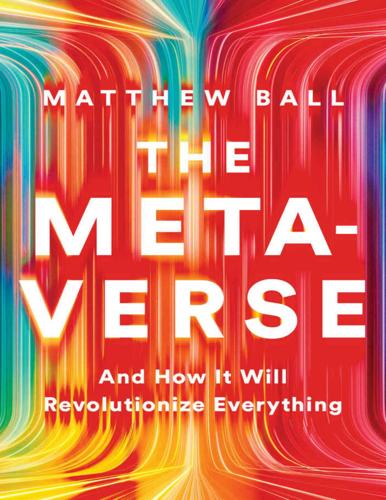
The Metaverse: And How It Will Revolutionize Everything
by
Matthew Ball
Published 18 Jul 2022
As of March 5, 2022, Helium’s network spanned more than 625,000 hot spots, up from fewer than 25,000 roughly a year earlier, distributed across nearly 50,000 cities in 165 countries.7 The total value of Helium’s tokens exceeds $5 billion.8 Notably, the company was founded in 2013, but struggled to gain adoption until it pivoted from a traditional (i.e., unpaid) peer-to-peer model to one which offered contributors direct compensation via cryptocurrency. The long-term viability and potential of Helium remains uncertain; most internet service providers (ISPs) prohibit their customers from rebroadcasting their internet connection, and while the ISPs typically have ignored such service violations as long as the connection was not resold and total data usage was low, there is no guarantee that the ISPs will continue to ignore such violations by users of Helium or any analogous system.

Blockchain Revolution: How the Technology Behind Bitcoin Is Changing Money, Business, and the World
by
Don Tapscott
and
Alex Tapscott
Published 9 May 2016
Just like a bitcoin, it can be sent to any address.”4 The blockchain (along with smart contracts) also ensures that the devices are paid for so they continue to work. The Internet of Things cannot function without blockchain payment networks, where bitcoin is the universal transactional language. Social Energy: Powering a Neighborhood Now, instead of poles, imagine digitizing every node in a power system to create entire new peer-to-peer models of power production and distribution. Everyone gets to participate in a blockchain-enabled power grid. Under a New York State–sponsored program to increase energy resiliency even in extreme weather conditions, work is under way to create a community microgrid in the Park Slope area of Brooklyn.
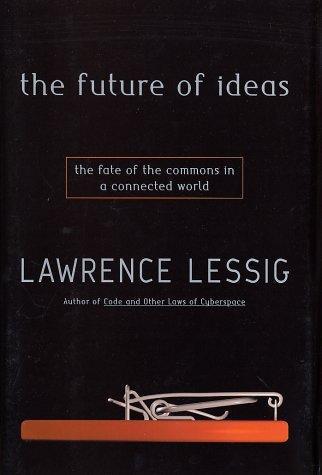
The Future of Ideas: The Fate of the Commons in a Connected World
by
Lawrence Lessig
Published 14 Jul 2001
See also http://p2ptracker.com (summarizing current technology); “Business, Bandwidth May Dash Hopes of a Peer-to-Peer Utopia,” http://news.cnet.com/news/0-1005-201-3248711-0.html. 26 Clay Shirky, “Clay Shirky's Writings About the Internet: Economics and Culture, Media and Community, Open Source,” November 16, 2000, www.openp2p.com/pub/ a/p2p/2000/11/24/shirky1-whatisp2p.html. 27 See, e.g., Nelson Minar and Marc Hedlund, “A Network of Peers: Peer-to-Peer Models Throughout the History of the Internet,” in Peer-to-Peer: Harnessing the Benefits of a Disruptive Technology, Andy Oram, ed. (Beijing and Cambridge, Mass: O'Reilly, 2001), 3-15 (describing how the original Internet was “fundamentally designed as a peer-to-peer system” but became increasingly client/server oriented over time owing to Web browser applications, firewalls, and other factors). 28 For background on SETI, see “History of SETI,” at http://www.seti-inst.edu/ general/history.html; Eric Korpela et al., “SETI@home: Massively Distributed Computing for SETI,” at http://www.computer.org/cise/articles/seti.htm. 29 Howard Rheingold, “You Got the Power,” Wired (August 2001), at http://www.wired. com/wired/archive/8.08/comcomp.html?
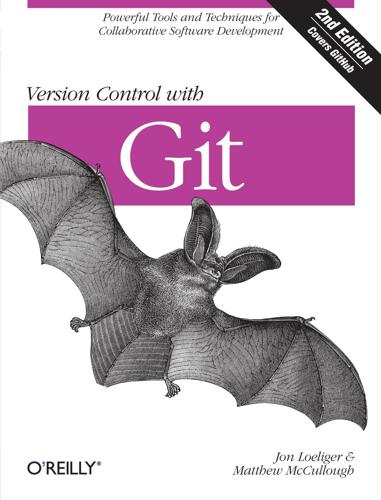
Version Control With Git: Powerful Tools and Techniques for Collaborative Software Development
by
Jon Loeliger
and
Matthew McCullough
Published 14 Aug 2012
Unlike CVS, SVN committed changes atomically and had significantly better support for branches. BitKeeper and Mercurial were radical departures from all the aforementioned solutions. Each eliminated the central repository; instead, the store was distributed, providing each developer with his own shareable copy. Git is derived from this peer-to-peer model. Finally, Mercurial and Monotone contrived a hash fingerprint to uniquely identify a file’s content. The name assigned to the file is a moniker and a convenient handle for the user and nothing more. Git features this notion as well. Internally, the Git identifier is based on the file’s contents, a concept known as a content-addressable file store.

Dawn of the Code War: America's Battle Against Russia, China, and the Rising Global Cyber Threat
by
John P. Carlin
and
Garrett M. Graff
Published 15 Oct 2018
“The experienced [cybersecurity attorneys] you [could] count on one hand,” recalls Adam Hickey, who became one of the founding members of our team. We hoped to build a larger team, modeled on the approach I had seen when I coordinated the Justice Department’s CHIP network. The CHIP prosecutors, with their special training on computer crimes, cut across the various US attorney’s offices, working in a peer-to-peer model, helping to provide technical expertise. We wanted to emulate that in national security cases, combining the CHIP model with another national Justice Department team known as ATAC, the Anti-Terrorism Advisory Council, prosecutors in each office specially trained in dealing with classified sources and methods who were responsible for working with the FBI’s Joint Terrorism Task Force to help share information with state and local partners on counterterrorism cases.